+91-8929175340
In 600, upon commission by Pope Gregory the Great a hospital was built in Jerusalem to treat and care for Christian pilgrims. In 1005, the hospital was destroyed and in 1023 rebuilt by Italian merchants on the site of the monastery of Saint John the Baptist.
The monastic hospitaller order was founded following the First Crusade by the Blessed Gerard, who acquired territory and revenues for his order throughout the Kingdom of Jerusalem and beyond. His successor, Raymond du Puy de Provence, established the first significant Hospitaller infirmary near the Church of the Holy Sepulcher in Jerusalem. Initially the group just cared for those pilgrims who made it to Jerusalem, but the order soon extended into providing an armed escort to pilgrims which grew into a substantial force.
Together with the Templers, formed in 1119, they became one of the most powerful Christian groups in the area. The order came to distinguish itself in battles against the Muslims, its soldiers wearing a black surcoat with a white cross.
By the mid-12th century, the order was clearly divided into military brothers and those who worked with the sick. It was still a religious order with useful privileges granted by the Papacy such as exemption from all papal authority, no tithes payment and allowance to own its religious buildings. Many of the more substantial Christian fortifications in the Holy Land were the work of either the Templers or Hospitallers. At the height of the Kingdom of Jerusalem the Hospitallers held seven great forts and 140 other estates in the area. The two largest of these, were the Krak des Chevaliers and Margat (both in Syria).
Knights of Cyprus and Rhodes
The rising power of Islam eventually pushed the Knights out of their traditional holdings in Jerusalem. After the fall of the Kingdom of Jerusalem (Jerusalem itself fell in 1187), the Knights were confined to the County of Tripoli, and when Acre was captured in 1291 the order sought refuge in the Kingdom of Cyprus. Later the Grand Master Guillaume de Villaret acquired their own temporal domain, selecting Rhodes to be their new home. His successor Foulkes de Villaret executed the plan, and on 15 August 1309, after over two years of campaigning, the island of Rhodes surrendered to the knights. They also gained control of a number of neighboring islands, as well as the Anatolian ports of Bodrum and Castellorizon (Megisti).
The Templers were dissolved in 1312 and much of their property was given to the Hospitallers. On Rhodes , now known as the Knights of Rhodes , they were forced to become a more militarized force, fighting especially with the Barbary pirates. They withstood two invasions in the 15th century. In 1494 they created a stronghold on the peninsula of Halicarnassus (now Bodrum ). They used pieces of the partially destroyed Mausoleum of Halicarnassos, one of the Seven Wonders of the Ancient World, to strengthen their Bodrum Castle.
However in 1522 an entirely new sort of force arrived when 400 ships under the command of Sultan Suleyman delivered 200,000 men to the island. Against this force the Knights had about 7,000 men-at-arms and the walls of the city. The siege lasted six months, at the end of which the survivors were allowed to leave Rhodes and retreated to Sicily and Malta.
Day 1 : Athens
Upon arrival in Athens, transfer to your hotel for overnight.
Athens alone is worth a trip to Greece.
The Acropole, the Parthenon, the National Museum, the Plaka area, the Syndagma (Constitution) Square alone are worth to go to Athens. Athens, capital of modern Greece, at its foundation in 3000 B.C. was a small fortified village at the top of the Acropole.
It owes its name to the Goddess Athena who won a fight against Poseidon. Athens, today, counts about 4 million inhabitants.
To discover the city, wandering in through the tiny streets and the popular areas are incomparable : bazaars, gardens, Byzantine churches and magnificent ruins remind the turbulent past and dynamical present of Athens.
Overnight in Athens
Day 2 : Overnight ferry to Rhodes
Athens Sightseeing with Acropolis Museum :
From Tuesday to Sunday, all year round - Dep: 08:30 - Ret: 13:30
From the Acropolis to Omonia Square, with the half-day sightseeing and Acropolis museum tour you'll see all the famous sites of ancient and modern Athens on this comprehensive morning tour. Offering a perfect overview of the modern city, this guided halfday tour will help you get your bearings if this is your first visit to Athens. The Athens half-day tour depart for a photo stop at Panathinaiko Stadium where the first Olympic Games took place in 1896. It is the only stadium built out of white marble. Proceed, passing by Zappeion and Temple of Olympian Zeus. You will then pass the Athens Trilogy which includes the University of Athens, the Academy of Athens, and the National Library. Continue passing by National Garden, Hadrian’s Arc, St. Paul’s Church, Parliament, Tomb of the Unknown soldier, Schliemann’s House (Numismatic Museum), Catholic Cathedral, Old Parliament, Constitution Square ,Russian Orthodox Church, and finally ACROPOLIS (visit Propylae, Temple of Athena Nike, Parthenon, Erechtheion with its Porch of Maidens). Continue the expert guided Athens sightseeing and museum tour with a pleasant short walk passing by Herodion and Dionysos Theater, in order to visit the ACROPOLIS museum.
Avoid and skip the lines of the new museum.
Main attractions such as votives, artifacts of every day life, statues from archaic period, Caryatids, and of course the Parthenon hall with the metopes, the pediments and the frieze will impress you.
Free afternoon to stroll the “Plaka” (old town) area.
In the evening, transfer to the Airport and fly to Rhodes for overnight or if you prefer, transfer to the port of Piraeus to take the overnight ferry to Rhodes.
Day 3 : Rhodes
The Knights' medieval citadel, dominated by the towers of the Palace of the Grand Masters, forms the centre of the Old Town. Moats and two miles of walls surround this medieval castle.
Eleven gates give access to the Old Town, which is divided into the Collachium (the Knight's quarters) and the Bourg (houses the rest of the population). As one of the finest walled cities in existence, the Old Town is now a UNESCO World Heritage Site.
The Palace of the Grand Masters permanently houses the Medieval Rhodes and Ancient Rhodes Exhibitions. Both of these exhibitions can be seen as part of a tour of the Palace of the Grand Masters. The medieval exhibition covers Rhodes from the 4th century AD to the Turkish conquest of 1522, and the ancient exhibition details 45 years of archaeological investigation on the island with a stunning collection of finds.
Overnight in Rhodes
Day 4 : Rhodes
e total strength of the knights was usually around 200. In 1466 their numbers were to rise to 350 and in 1501 to 400. Finally in 1514 the total number was 550, but English numbers was never to exceed more than a dozen knights. Despite this disparity in numbers between the 'tongues', the system on the whole worked well, apart from the occasional squabble over precedence Some of the Grand Priory have today become Consulates (such as France) who propose very interesting exhibitions.
To enjoy a general view over the old town, we propose you take the city bus or train tour departing every hour opposite the Colona Port.
Overnight in Rhodes
Day 5 : Kos
Depending the proposed ferry connection, we will leave Rhodes and settle in Kos for a few nights. If there will be an evening ferry, you may consider an island tour in Rhodes before going:
Lindos : This picturesque village, ancient in history, located on the south east coast of the island. It is one of the most popular travel locations in Greece and the Mediterranean, because of the relaxed atmosphere, the friendly local inhabitants, and the pristine condition in which you find the town itself, and its well-kept beaches. The old town itself is a maze of picturesque narrow streets with most of the small shops openly displaying wares from unique clothes and jewelry, to pottery, custom made sandals and leather goods, and regional crafts. It’s as shopaholics dream and you can spend hours browsing through the shops or taking a break in the villages many restaurants and ethnic bars.
The Butterflies Valley : In the western side of the island of Rhodes, approximately five kilometers south east of the village of Theologos (or Tholos), lies the Valley of the Butterflies (Petaloudes). This is one of the most attractive destinations on the island. During August, thousands of butterflies of the genus Panaxia (species Quadripunctaria Poda) overwhelm the valley in order to reproduce. During the rainy period, the Butterflies in the caterpillar stage remain in the Mediterranean thicket (arbutus, myrtle and rush) feeding on the foliage. As the end of the wet season approaches, towards the end of May, the final stage is concluded and the butterfly in all her perfection makes her appearance in the form recognizable to us all. They move constantly towards areas of highest humidity is greatest, always following the "water ways", as the dry period progresses, they finally arrive at the valley.
Overnight in Kos
Day 6 : Kos
The castle of the Knights of the Order of Saint John is situated at the entrance of Kos harbour on what used to be an island in antiquity, communicating with the inland through a bridge that one can still see even today namely the bridge of “Phoinikon" (Palm Trees) Avenue.
The castle consists of two defensive precincts. The interior one has four circular towers in the corners; the south-eastern tower forms part of the exterior precinct, which is the larger one of the two, with massive bastions on the four corners, battlements and gun ports. The two precincts are separated by a large moat and communicate with a drawbridge. The castle was built of local stone as well as parts of ancient buildings (columns, architraves, bases etc.) from the ruins of the ancient city. On the upper part of its masonry, one can see many blazons.
Overnight in Kos
Day 7 : Kos
For this second day, we propose some relaxation at the beach or for the curious ones, a tour to the archaeological sites of the island such as the Asklepeion.
Kos : Steeped in history, Kos boasts many interesting sights to see, including the fascinating ancient hospital of Asklepion, the plane tree of Hippocrates, Neratzia Castle and the ruins at Thesi Palatia. From a lively day out exploring the vibrant and bustling streets of the capital Kos Town, to a taste of Greek tradition strolling around a remote unspoilt village, the island of Kos offers something for everyone.
Overnight in Kos
Day 8 : Bodrum
At leisure, you may take either the morning or afternoon ferry to Bodrum where you may want to enjoy the facilities of your hotel.
Bodrum : In the eyes of its lovers, Bodrum, with its low-rise whitewashed houses and subtropical gardens, is the longest-established, most attractive and most versatile Turkish resort. If you want all waterborne distractions laid on by day, and some of the most sophisticated nightlife in Turkey, then Bodrum town and Gumbet in particular will be your dream destination.
Overnight in Bodrum.
Day 9 : Bodrum
Bodrum is the modern name of the ancient Halicarnassos. It is on the Western coast of Turkey, on a long peninsula, not far from Rhodes. After the fall of Smyrna (Izmir) to Tamerlane in 1402, the knights of Saint John in Rhodes decided to settle with a stronghold on the Anatolian mainland in Bodrum.
Building began almost immediately under the direction of the German architect Heinrich Schlegelholt. The knights held it until Rhodes itself fell to the forces of Suleyman II the Magnificent in 1522, at which point Bodrum was evacuated. The Castle of Bodrum today houses one of the most interesting underwater archaeology exhibition including ship wrecks. Highlights in Bodrum : The Bodrum Castle : When the Bodrum Castle was designated as a museum it was little more than a romantic ruin attractive only to those interested in traces left by medieval crusading knights on the Anatolian shore.
Castle restoration projects and the beautification of grounds were started by the first director, Mr. Haluk Elbe, whose name has been given to the art gallery at the entrance to the museum. But it is the director, Mr. Oguz Alpozen, (retired in july 2005) who deserves credit for implementing the "living museum" concept which attracts hundreds of thousands visitors and which has earned international renown and recognition in the form of the Museum of the Year Award. In the present time Bodrum Museum of the Underwater Archaeology is directed by Mr.Yaşar Yıldız. The Departments of the Museum are : Carian Princess Hall, Amphora Exhibition, The Dungeon, English Tower, German Tower, Secret Museum, Turkish Bath Exhibition, Glass wreck Hall, Glass Hall, Tektas Shipwreck, Late Roman Shipwreck, Commandant's Tower, Uluburun Shipwrecks, Coins and Jewellery Hall. The
Maussoleum at Halicarnassus :
The city of Halicarnassus, the capital of a small kingdom along the Mediterranean coast of Asia Minor, was ruled by Mausolus, son of Hecatomnus, founder of the kingdom. Mausolus in his time, extended the territory even further so that it finally included most of southwestern Asia Minor.
Mausolus, who ruled with his queen Artemisia over Halicarnassus and the surrounding territory for 24 years, spoke Greek and admired the Greek way of life and government. He founded many cities of Greek design along the coast and encouraged Greek democratic traditions.
In 353 B.C. Mausolus died, leaving his queen Artemisia, who was also his sister (It was the custom in Caria for rulers to marry their own sisters), broken-hearted. As a tribute to him, she decided to build him the most splendid tomb in the known world. It became a structure so famous that Mausolus's name is now associated with all stately tombs through our modern word mausoleum. The building was also so beautiful and unique it became one of the Seven Wonders of the Ancient World. The Mausoleum overlooked the city of Halicarnassus for many centuries. It was untouched when the city fell to Alexander the Great in 334 B.C. and still undamaged after attacks by pirates in 62 and 58 B.C.. It stood above the city ruins for some 17 centuries. Then a series of earthquakes shattered the columns and sent the stone chariot crashing to the ground. By 1404 A.D. only the very base of the Mausoleum was still recognizable. Crusaders, who had occupied the city from the thirteen century onward, recycled the broken stone into their own buildings. In 1522 rumors of a Turkish invasion caused Crusaders to strengthen the castle at Halicarnassus (which was by then known as Bodrum) and much of the remaining portions of the tomb was broken up and used within the castle walls. Indeed sections of polished marble from the tomb can still be seen there today.
Overnight in Bodrum.
Day 10 : Pamukkale
We will take the slow way to Pamukkale. Or, if you prefer, you may want to stay the morning in Bodrum before taking the road.
Pamukkale & Hierapolis :
After a trip of about 2,5 hours through the wild landscapes and cotton fields, we will reach Pamukkale, meaning "cotton castle" in Turkish. This natural site and attraction in south-western Turkey enjoys a temperate climate over the greater part of the year. The ancient city of Hierapolis was built on top of the white "castle" which is in total about 2700 meters long and 160m high. After a tour on the travertines and a swim in one of the numerous thermal pools, we will continue our tour with the visit of Hierapolis, a UNESCO World Heritage Site. As the hot springs of Pamukkale were used as a spa since the 2nd century B.C. great baths were constructed with huge stone blocks without the use of cement, and consisted of various closed or open sections linked together. There are deep niches in the inner section of the bath, library, gymnasium and other closed or open locations. The complex, constructed in the 2nd century, was visited by people who came to soothe their ailings here. Many of them retired and died here which explains the origin of the large necropolis filled with sarcophagi.
Overnight in Pamukkale.
Day 11 : Istanbul
Today, after a morning tour to the archaeological site of Hierapolis and the natural site of Pamukkale, we will relax at the thermal pool of our hotel. An opportunity to be pampered at the spa.
If you prefer, you can take the opportunity to visit any of the sites below :
Aphrodisias :
The ancient city dedicated to Aphrodite, the goddess of Beauty, Love and Fertility. Aphrodisias, a small city in Caria, Asia Minor, was built near a marble quarry which was extensively exploited in the Hellenistic and Roman periods, and sculptors in marble from Aphrodisias became famous in the Roman world. Many examples of statuary have been unearthed in Aphrodisias, and some representations of the Aphrodite of Aphrodisias also survive from other parts of the Roman world, as far afield as Portugal. We will visit the stadium, which is the best preserved in Anatolia, the Temple of Aphrodite, the Tetrapylon, the Theatre and finish our tour with a visit of the museum, an exhibition of the most beautiful artifacts of ancient times.
Or Laodikea :
One of the seven churches of the Revelation, Laodicea is situated on the long spur of a hill between the narrow valleys of the small rivers Asopus and Caprus, which discharge their waters into the Lycus. It was approximately 10 km south of Hierapolis and, according to Strabo, it was on a major road. The existing remains attest its former greatness. The ruins near Denizli are well preserved and are being substantially renovated (2012). Its many buildings include stadium, baths, temples, gymnasium, theatres, bouleuterion, etc… On the east the line of the ancient wall may be distinctly traced, with the remains of the Ephesus gate; there are streets traversing the town, flanked by colonnades and numerous pedestals. North of the town, towards the Lycus, are many sarcophagi, with their covers lying near them, partly imbedded in the ground, and all having been long since rifled.
In the evening, transfer to the Denizli airport and flight to Istanbul for overnight.
Day 12 : Istanbul
Today we will visit the capital of three empires, the only city spread over two continents, bridge between East and West... a metropolis full of surprizes ! The highlights of this city, the must do’s are the Ayasofya Museum, the Topkapi Palace, the Sultanahmet (Blue) Mosque, the Hippodrome… !
To better feel, live Istanbul, we propose a walking tour (max. 2km – 1,5Mi) :
Our visits will start at the Saint Sophia, a basilica built by Constantine the Great in the 4th century and reconstructed by Justinian in the 6th century. Once the symbol of the Ottoman conquest of Istanbul and reconverted to a mosque, the Saint Sophia is today a museum and one of the architectural marvels of all times. Just opposite the Saint Sophia, the Sultanahmet Imperial Mosque : this building of the 16th century is also known as the Blue Mosque because of its magnificent interior decoration of blue Iznik tiles. The Hippodrome was the scene of chariot races in the Byzantine times. The three monuments in the middle, the Obelisk of Theodosius, the bronze Serpentine column and the Column of Constantine, are relics of these glorious times. After lunch, we continue with the visit of the Topkapi Palace, the palace of the Ottoman sultans for about 5 centuries which today houses a marvelous collection of crystal, silver and Chinaware, robes worn by the sultans and their families, the imperial jewels, miniatures. Except from these you will also enjoy wandering in the gardens entering imperial rooms and salons.
The Saint Sophia museum is closed on Mondays, official and religious holidays. This tour does not include the visit of the Harem. The Topkapi Palace is closed on Tuesdays, official and religious holidays.
Overnight in Istanbul.
Day 13 : Istanbul
The Bazaars and the Bosphorus : For those who want to enjoy there time in Istanbul other than by visiting, we propose a tour of the famous Istanbul covered and Egyptian bazaars. The Covered bazaar is a labyrinth of streets and passages counting more than 4000 shops where each trade has its own area : goldsmiths, carpet sellers, arts and crafts such as ceramic plates, copperware, brassware, onyx ware and meerschaum pipes. While wandering in this historical shopping mall, enjoy also shopping.
The covered bazaar is closed on Sundays, official and religious holidays.
At the end of the Covered Bazaar, you will enter the Egyptian Bazaar also known as the Spice Bazaar. After lunch, we will head for the Eminönü pier where we will embark a 2 hours cruise on the Bosphorus sailing up along the European shore and back along the Asian shore. The unique view of the Yalis (wooden mansions along the water), the Rumeli Fortress are among the attractions of this cruise.
Overnight in Istanbul.
Day 14 : Istanbul
For your last day, we propose at choice : - A boat tour to the Princes' Islands, former land of exile of the Byzantine Princes and today a quiet holidays destination; - An excursion to either Bursa, first Ottoman capital, or to Iznik, the first consular city;
- A stroll through the new town “Taksim – Beyoğlu”
- Visit some of the famous museums of Istanbul such as the Museum of Archaeology, the Museum of Ottoman and Islamic Art
- Enjoy a Turkish bath…
Overnight in Istanbul.
Day 15 : The Templers Thank You for the Time You Spent with Them
Time at leisure till transfer to the airport for your home flight.
| No of pax | Age Limit | Price per pax (Rs) |
|---|---|---|
| Adult | Above 12 years | $ 1146 / Adult |
* Mentioned prices may vary depending upon date of travel, hotel availability, surge pricing and seasonal rush.
Payment Terms & Methods :
* Some Advance Percentage of total booking amount
* Airfare/Transport fare to be paid full at one time in advance.
Cancellation & Refund Policy :
* Upon cancellation, refund will be made after deducting the Retention Amount.
* Retention Amount varies as per the number of days left before your package start date.
Anker Travel View Profile
0 / 5
About Anker Travel
 8D/7N
8D/7N
Kusadasi - Florida (Fl) - Pergamum - Thyatira - Salihli - Samos
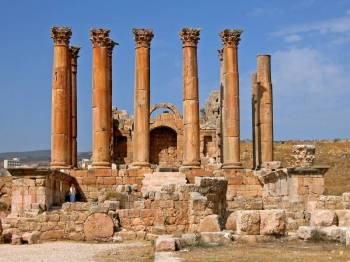 13D/12N
13D/12N
Istanbul - Cappadocia - Kusadasi - Athens
 15D/14N
15D/14N
Athens - Heraklion - Kusadasi - Cappadocia - Rhodes
 15D/14N
15D/14N
Athens - Heraklion - Santorini - Rhodes - Pamukkale
 15D/14N
15D/14N
Athens - Santorini - Kusadasi - Cappadocia - Mykonos
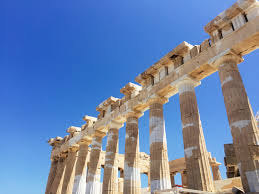 15D/14N
15D/14N
Istanbul - Athens - Mykonos - Cappadocia - Santorini
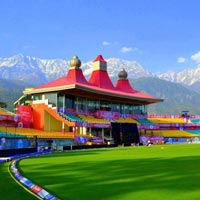 15D/14N
15D/14N
Shimla - Kufri - Manali - Dharamshala - Dalhousie - Khajjiar - Katra - Amritsar - A..
 15D/14N
15D/14N
Bikaner - Jodhpur - Jaisalmer - Mount Abu - Chittorgarh - Pushkar - Ajmer - Jaipur ..
08047021402
Get Quote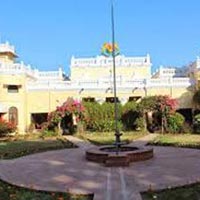 15D/14N
15D/14N
Jabalpur - Kanker - Bastar - Jagdalpur - Orchard - Singapore - Kallang - Woodlands ..
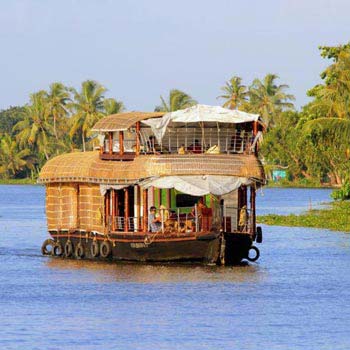 15D/14N
15D/14N
New Delhi - Agra - Jaipur - Kovalam - Kochi - Alleppey
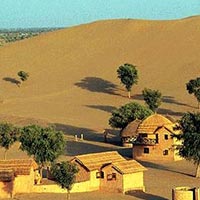 15D/14N
15D/14N
New Delhi - Samode - Mandawa - Bikaner - Khimsar - Jaisalmer - Jodhpur - Ranakpur -..
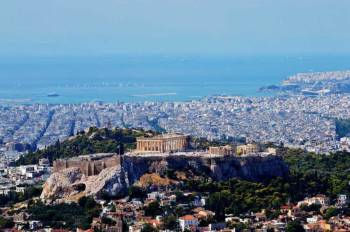 10D/9N
10D/9N
Athens - Thessaloniki - Kusadasi - Heraklion - Santorini - Mykonos - Milos
08049671316
Get Quote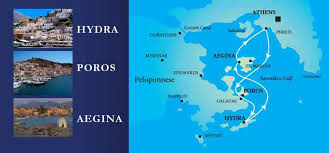 7D/6N
7D/6N
Athens - Hydra - Bahraich - Warora - Osmanabad